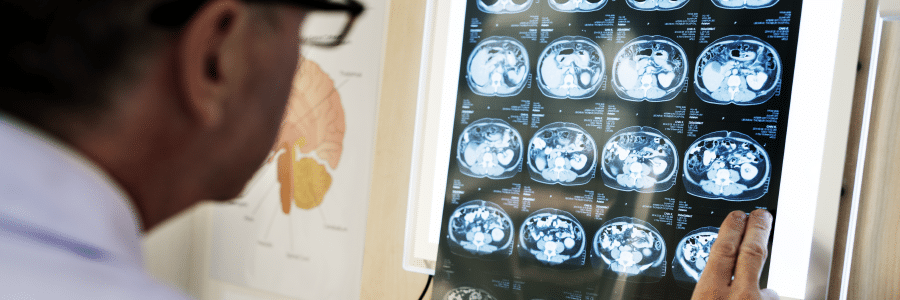What Causes Aneurysms?
January 16, 2022
About 500,000 people a year die of brain aneurysms. Thousands more die each year from aneurysms of the aorta.
An aneurysm occurs when an artery’s wall weakens, causing a large bulge. If the bulge ruptures, it can result in internal bleeding. An aneurysm can develop in any part of your body, but is most commonly found in the:
- Brain. Also called cerebral aneurysms, these usually form in the blood vessels deep in the brain. You may not even know you have an aneurysm. Cerebral aneurysms may affect up to 5% of people.
- Aorta. Aneurysms in the chest cavity are called thoracic (chest) aortic aneurysms. Abdominal (belly) aortic aneurysms are the most common type. In rare cases, arterial damage can affect both the chest and abdomen. Less commonly, aneurysms may occur in the legs, spleen, behind the knee, or in the intestines. The federal government estimates that about 13,000 Americans die of aortic aneurysms each year.
What causes aneurysms?
The exact causes are unclear, but doctors have identified certain factors that contribute to the condition:
Atherosclerosis.
This disease causes plaque, composed of cholesterol, fat, and other substances, to build in the arteries, preventing blood from flowing freely.
High blood pressure.
Higher than normal pressure may enlarge or weaken the blood vessels. But having higher-than-normal blood pressure doesn’t necessarily put you at risk for an aneurysm.
Age.
Studies show that abdominal aortic aneurysms are most common in people over 65.
High-fat and high-cholesterol diet.
Diet affects blood pressure, which can increase your risks.
Family history.
One in 10 people with abdominal aortic aneurysms has a family history of abdominal aortic aneurysms. Your chance of developing an abdominal aortic aneurysm is 1 in 5 for people who have a parent, brother, sister, or child with the condition.
Smoking.
If you smoke, an abdominal aortic aneurysm may grow more quickly and be more likely to rupture.
Obesity.
Excess weight can put pressure on the heart and the artery walls, increasing the risk of an aneurysm.
Drug abuse.
Some illegal drugs, including cocaine and methamphetamines, can spike a person’s blood pressure and inflame the blood vessels, increasing the risk for brain aneurysms.
Aneurysm symptoms to look for
The only sure way to determine if you have an aneurysm before it ruptures is by getting a CT scan or ultrasound. However, aneurysms near the surface of the body may show signs of swelling and pain. A large mass may also develop.
The symptoms of ruptured aneurysms vary, depending on its location. For example, the symptoms of a ruptured brain aneurysm begin with a sudden headache. You may also develop vision problems, nausea, or fainting.
Symptoms of an aortic aneurysm depend on whether it occurs in the chest or the abdomen. Both can produce sudden pain. But a thoracic aneurysm is often associated with sudden back pain, numbness, and a drop in blood pressure. An abdominal aortic aneurysm may cause rapid heart rate, dizziness, shortness of breath, or cold sweats.
Preventing aneurysms
Eating a healthy diet that includes plenty of fruits, whole grains, and vegetables may help prevent an aneurysm from forming. Meat and poultry low in saturated fat and cholesterol are also good options, as are low-fat dairy products.
You should also get regular exercise, especially cardio, to encourage healthy blood circulation and blood flow through the heart, arteries, and other blood vessels.
If you smoke tobacco products, quit.
Finally, schedule annual checkups to help you identify problems before they threaten your health.
Get the Care You Need
Ready to take the next step for a healthier life? Grady can help. If you need a primary care physician, give us a call at (404) 616-1000. We’ll arrange an appointment at a Primary Care Center near you. Doctors there can treat most conditions and provide access to Grady’s unparalleled medical specialty expertise.

Advertisement



